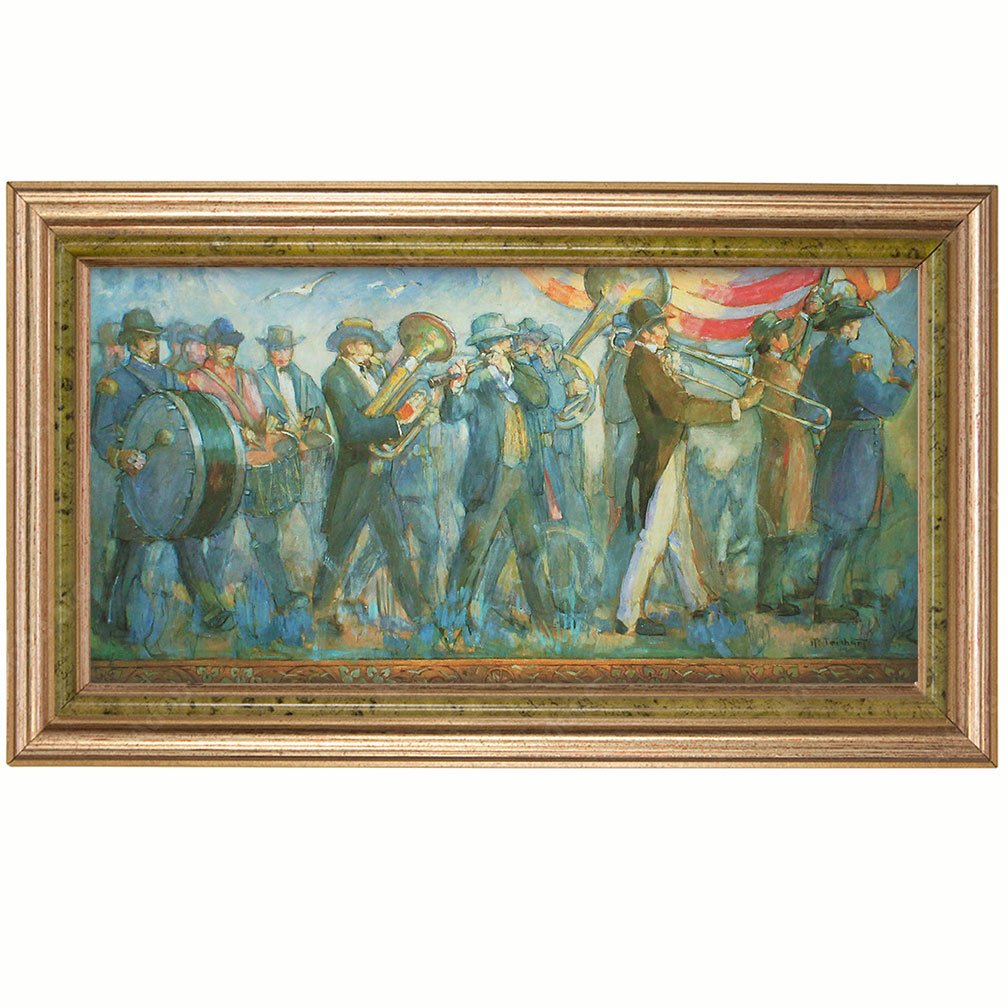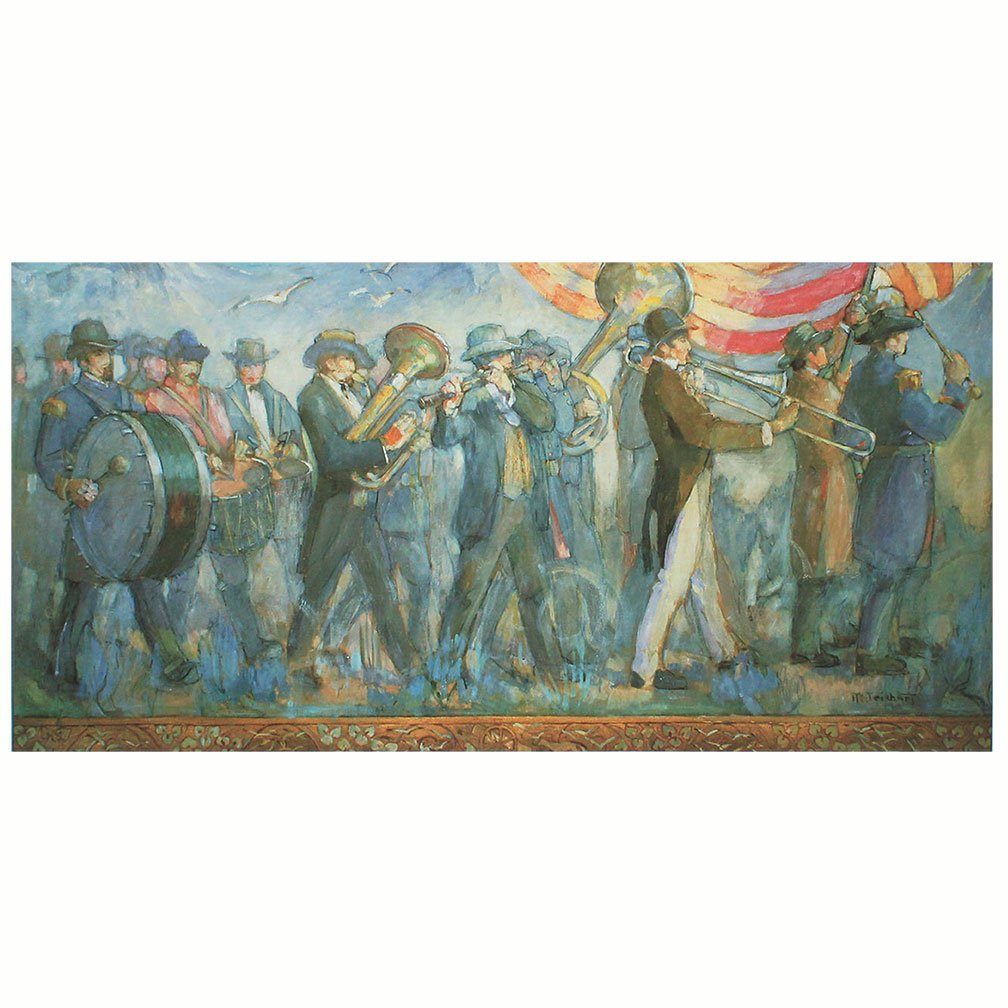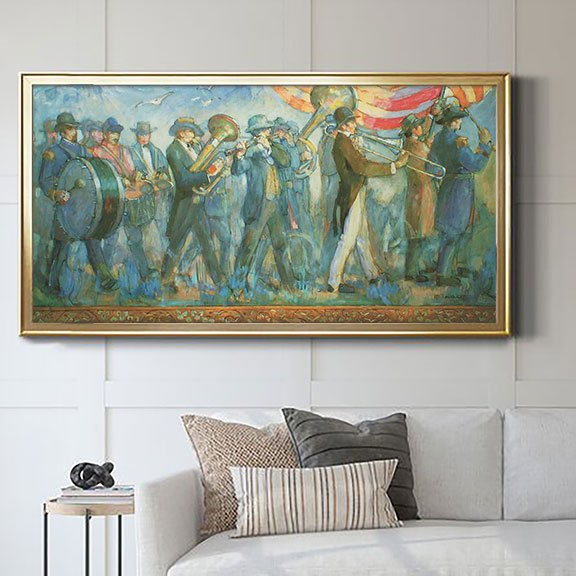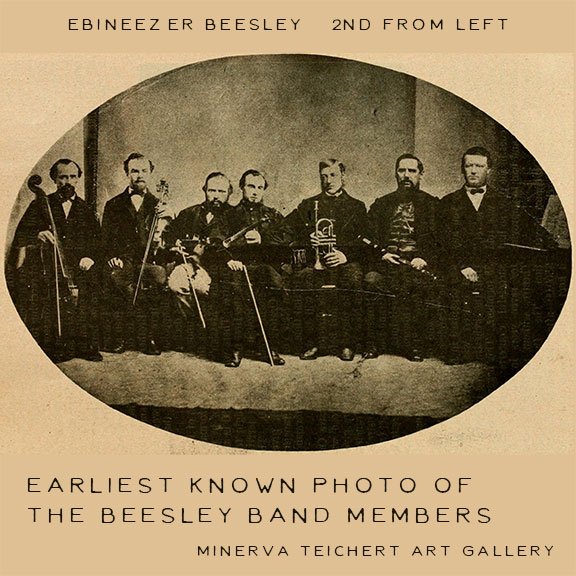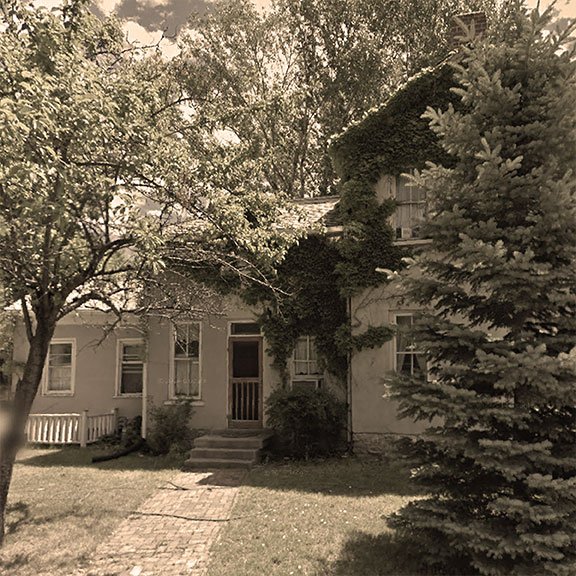Beesley Pioneer Band by Minerva Teichert (c.1939)
This colorful, well dressed band shows a patriotic celebration of American Independence with seagulls and flying flags. This favorite of Minerva Teichert depicts a beautiful marching band of the early 1900's. The triumphant stride and movement is delightful to behold.
History of Ebineezer Beesley & the Beesley Band
In the early days of Salt Lake City there was a gentleman named Ebineezer Beesley (1840 -1906) He was born in England and his parents were early converts of the Church of Jesus Christ of Latter-day Saints. In 1859 Beesley and his parents emigrated to Salt Lake City with the George Rowley Handcart Company. A cobbler by trade, he taught music and served as both choir director and music director for the church Sunday school. Soon thereafter, Beesley became a member of the Salt Lake Theatre Orchestra as a violinist. Ebineezer Beesley worked on his days off on the Church’s Juvenile Instructor magazine. President John Taylor called Beesley and a few others to organize and publish a church hymn book called the ‘Psalmody’; which was actually the first LDS Church hymnbook that included not just the words of a hymn, but the actual music so people would know how to sing the song. There are today, several hymns in the Church hymn book that were either written or composed by Ebineezer Beesley. In 1880 Beesley became the director of the Mormon Tabernacle Choir.
Many around Salt Lake City in those days also loved a marching band, which was often called Beesley’s Martial Band. They marched in parades and played at various events throughout the valley. They wore uniforms, “as best they could afford” - some members had complete uniforms and some only a coat. As a Deseret News columnist once wrote regarding the Beesley Band: “On many occasions they made an excellent showing on the streets of Salt Lake City and Elsewhere.” Minerva Teichert was inspired by the “sturdy and talented musicians” as she wrote in her journal, and in 1939 set out to paint a large mural of the Beesley Band on canvas. She highlighted their long-legged stride and their triumphant cadence. She added color and flare by way of flags and shining brass instruments. The first time the Beesley Band painting was seen in public was in the Tiffin Room at the Z.C.M.I. store in downtown Salt Lake City. Beesley himself founded the Beesley Music Company in SLC, and the mural hung at that location for many years.
More About Minerva Teichert
Minerva Teichert was an artist whose works ranged from western American subjects to many religious paintings primarily depicting the history of the Latter-day Saint movement. This includes Minerva’s several works requested by the Church that were used to illustrate the stories using Book of Mormon art. She is also well known for the many murals she painted in public and private buildings scattered throughout Wyoming, Idaho and Utah. She was born Minerva Kohlhepp in 1888 in North Ogden, Utah. Minerva was the second of ten children and spent most of the first half of her life doing just as much farm work as she did painting. She studied under famous artists like Robert Henri at the Art Institute of Chicago and Art Students League of New York. When she was 29 years old, Minerva Kohlhepp married Herman Teichert on September 15, 1917. However, only one year after their wedding, World War One broke out and Herman left for battle. Although Minerva traveled with Herman throughout his boot camp training and transfers, she was eventually forced to bid farewell and stayed at home with their newborn baby son. During the early years of their marriage, everything was in short supply because of the war, so Minerva Teichert would paint on scraps of wood and paper because there simply wasn’t enough money to buy art supplies. Fortunately, Herman returned home after the war and the couple went on to have four more children. Minerva and Herman spent most of their lives on a ranch in Cokeville, Wyoming. Much of Minerva Teichert art can also be found by searching for LDS art, LDS church pictures, and Mormon art; even though these are not official names of the Church of Jesus Christ of Latter-day Saints.

